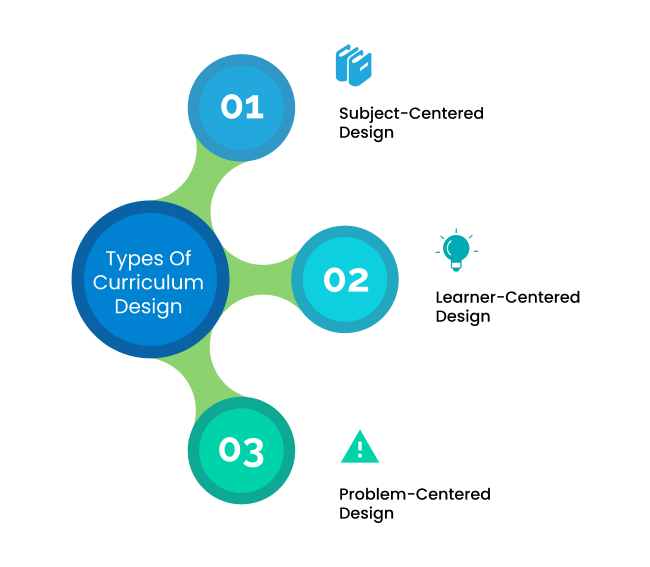If you’ve ever taught a class that just clicked—where students were engaged, the lessons built naturally, and learning felt meaningful—it probably wasn’t a coincidence. It was good curriculum design at work.
On the other hand, when students are confused, outcomes are unclear, and lessons feel disjointed, it’s often because the curriculum is lacking structure, clarity, or relevance.
Having worked with teachers and school leaders in various settings, I’ve learned this: curriculum design is the foundation of everything we do in education. Done right, it sets up teachers for success and helps students grow not just academically, but personally.
Let’s break down what makes curriculum design effective—and how schools can do it better.
🧠 What Is Curriculum Design?
:max_bytes(150000):strip_icc()/curriculum-design-definition-4154176_final-997bf6be4c1f488883765441c2181c23.png)
Curriculum design is the process of creating an educational plan that outlines:
-
What students will learn (content and skills)
-
How they will learn it (methods and resources)
-
How learning will be assessed (formative and summative evaluation)
It connects standards, learning goals, teaching strategies, and student needs into a coherent roadmap. Great curriculum design doesn’t just teach content—it builds critical thinking, creativity, and lifelong learning habits.
🔑 Principles of Effective Curriculum Design for K–12
✅ 1. Standards Alignment
Curriculum must align with state or national standards to ensure consistency and accountability across schools and districts.
-
Use backward design: Start with what students need to know and do, then plan learning activities and assessments accordingly
-
Break down standards into clear, measurable learning targets
-
Scaffold skills across grade levels for continuity
🎯 Alignment ensures that instruction is focused, purposeful, and measurable.
✅ 2. Student-Centered and Culturally Relevant
Curriculum should reflect students’ interests, identities, and lived experiences.
-
Include diverse voices, cultures, and perspectives
-
Offer choice and voice in how students demonstrate learning
-
Be flexible enough to meet varying learning styles and needs
🌍 When students see themselves in the curriculum, they connect and engage more deeply.
✅ 3. Clear Learning Objectives
Every unit and lesson should answer:
-
What should students know or be able to do?
-
Why does this learning matter?
-
How will we know they’ve learned it?
Use “I can” statements or success criteria so students and teachers are on the same page.
🔍 Clarity helps focus both instruction and assessment—and keeps expectations consistent.
✅ 4. Coherent Scope and Sequence
Effective curriculum has a logical progression of skills and concepts.
-
Map out units across the year (scope) and order them strategically (sequence)
-
Ensure new learning builds on prior knowledge
-
Avoid unnecessary repetition or gaps in instruction
🧩 A well-sequenced curriculum supports deep understanding, not just surface-level coverage.
✅ 5. Assessment and Feedback Integration
Assessment shouldn’t just be the final step—it should guide instruction throughout.
-
Use formative assessments to check understanding in real-time
-
Include summative assessments that reflect real-world application
-
Embed student self-assessment and reflection
📈 Feedback helps students grow and gives teachers data to adjust instruction effectively.
✅ 6. Interdisciplinary and Real-World Connections
Students learn best when they see how content connects to life outside the classroom.
-
Link science to current events, math to finance, or reading to social issues
-
Design project-based learning (PBL) units that solve real problems
-
Incorporate career and technical education (CTE) pathways
🔗 Learning becomes more relevant, engaging, and memorable when it crosses subject lines.
✅ 7. Flexibility for Differentiation
No two students learn the same way. Curriculum should allow for:
-
Multiple entry points
-
Tiered activities
-
Support for English language learners (ELLs) and students with IEPs
-
Opportunities for enrichment and challenge
🛠️ A strong curriculum gives teachers tools to meet every learner where they are.
🧰 Tools and Tips for Effective Curriculum Design
-
Use curriculum mapping tools (like Chalk, Eduplanet21, or Google Sheets)
-
Involve teacher teams and instructional coaches in the design process
-
Review and revise curriculum annually based on data and feedback
-
Pilot new units before schoolwide rollout
-
Align professional development with curriculum goals
📎 Designing curriculum is a living process—not a one-time product.
🎯 Real-World Example: Backward Design in Action
At one middle school I worked with, teachers struggled with inconsistent outcomes in writing. After adopting a backward design approach, starting with clear rubrics and end goals, they redesigned their ELA curriculum to scaffold writing throughout the year.
Result?
-
Students gained more confidence in writing
-
Teachers had more clarity and shared tools
-
State writing scores improved by 15% in one year
🎓 Good curriculum isn’t just about coverage—it’s about progress.
✅ Final Thoughts: Curriculum Is the Backbone of Great Teaching
Curriculum design isn’t just an administrative task—it’s where teaching begins. It provides structure, direction, and purpose. When done well, it frees up teachers to do what they do best: teach, inspire, and adapt to their students.
Whether you’re designing from scratch or revising existing materials, focus on clarity, alignment, and student voice. Because when the curriculum works, everyone wins—students, teachers, and the community.



